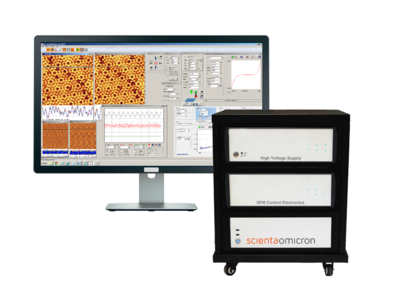Contact Atomic Force Microscopy (c-AFM)
For non-specialist readers, contact mode AFM can be thought of as a vinyl record being played. In this example, the needle (in AFM “tip”) that is sitting at the end of an arm (in AFM “cantilever”) follows the topographic contour of the record (in AFM “sample surface”).
In contact mode operation, the AFM tip continuously touches the sample surface, and the tip–sample interaction-force repels the cantilever. The resulting bending of the cantilever due to the force perpendicular (normal) to the surface can be monitored by deflection of a laser beam from the backside of the cantilever arm. In this scheme, the degree of laser deflection (measured by a photosensitive sensor) is proportional to the bending of the cantilever arm and thus on the normal force between cantilever tip and surface. In the most straight forward approach, a set point for the normal force is set at the beginning of the experiment. Then, when scanning over the surface, a feedback loop actively varies the distance z between tip and sample so that the initially set normal force stays constant. These different z values (one for each lateral coordinate of the tip on the surface) are used to construct the AFM image.


